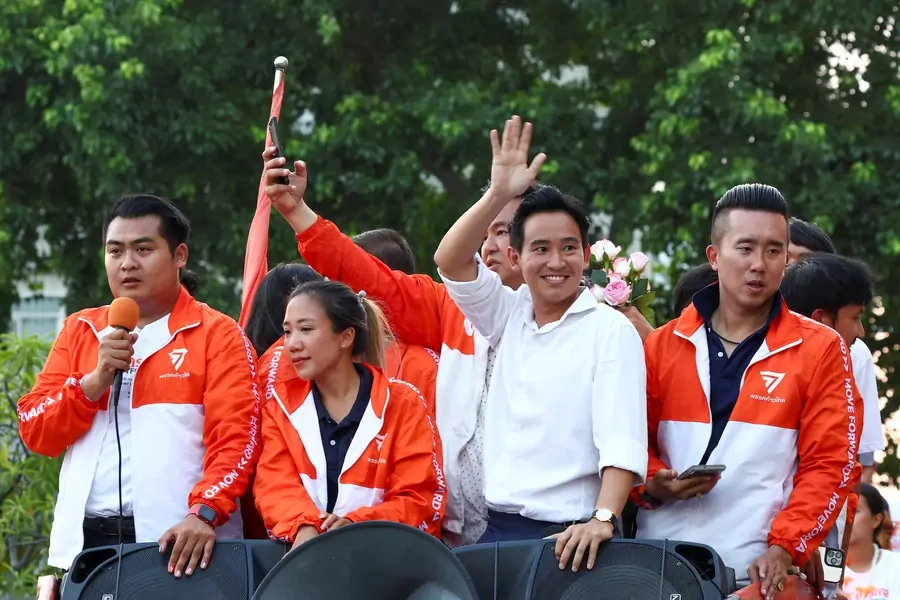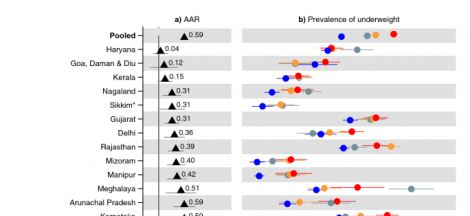By Arun Kumar Shrivastav
One of the key questions arising from the recent opposition victory in Thailand’s general election on May 14 is the potential impact on the country’s policy towards Myanmar. The progressive Move Forward Party (MFP), which secured the most chairs in the House of Representatives, is likely to pursue a more assertive foreign policy towards Myanmar with which Thailand shares over 2000 km of border.
Since the military takeover in Myanmar in February 2021, Prime Minister Prayut Chan-o-cha’s administration has adopted a remarkably accommodative stance towards the military junta. However, despite claiming engagement in “quiet diplomacy,” the Thai government has largely remained silent despite the Myanmar military’s frequent atrociousness against civilians and the destabilization of regions along the Thai-Myanmar border.
In recent months, Thailand has hosted several Track 1.5 dialogues involving the military and representatives from neighbouring countries, excluding the opposition National Unity Government (NUG), which coordinates the anti-coup struggle. The Thai government’s approach can be attributed to various factors, including the close personal and institutional relationships between the two nations’ militaries and Thailand’s abidance to the Association of Southeast Asian Nations (ASEAN)’s norm of “non-interference.”
In the lead-up to the election, the MFP’s leader, Pita Limjaroenrat, pledged to change Thailand’s current approach towards Myanmar as part of the party’s broader commitment to human rights, justice, and the rule of law in Thai foreign policy.
In his first press meeting after the election, Pita acknowledged Thailand’s pivotal role in ensuring that Myanmar adheres to ASEAN’s Five-Point Consensus peace plan. The plan calls for a prompt cessation of violence and inclusive political dialogue involving “all parties” in the conflict. Pita also emphasized his priority of establishing a humanitarian corridor between Thailand and Myanmar and supporting the implementation of the recently passed Burma Act by the U.S. Congress. The act authorizes the provision of non-lethal support for resistance forces in Myanmar. Pita pledged to “work with the international community to make sure that we have the correct amount of pressure and commitment for people to resolve their conflict.”
Furthermore, Pita has stated that his policy on Myanmar would involve engagement “with all stakeholders,” including the opposition National Unity Government and other resistance forces. However, the military leadership in Naypyidaw appears concerned about the MFP’s rising influence. Vice Senior Gen. Soe Win directed regional commanders along the Thai border, expressing fears that the MFP would support terrorists. As a result, he instructed heightened surveillance and gathering of information about the party’s activities.
The MFP’s promises alone signify a significant shift in Thai policy, if not a radical one. However, it is challenging to assess their impact on the course of the conflict in Myanmar.
At the regional status, a more active Thai government would undoubtedly bolster ASEAN member states, such as Malaysia and Indonesia, which are advocating for a stronger regional response to the junta. Nevertheless, opposition from countries like Vietnam, Cambodia, and Laos, which strictly adhere to a conservative interpretation of ASEAN’s principle of “non-interference,” may persist.
It is essential to recognize that there are limitations to any external government’s ability to influence Myanmar’s military administration. Implementing a more humane policy and a robust regional response could offer hope for the people of Myanmar. While a shift in Thailand’s policy towards Myanmar under an MFP-led government is a positive step, it must be acknowledged that it is just one piece of the puzzle.
Thailand’s cooperation was a necessary precondition for any attempt to resolve Myanmar’s interlocking crises and alleviate the deteriorating humanitarian conditions within the country. However, it is insufficient, as similar shifts from Myanmar’s other major neighbours, India and China, would also be required.
Another critical factor to consider is the domestic front. Suppose Thailand’s conservative establishment allows the MFP-led coalition to take office. In that case, resistance to implementing its policy agenda, including its stance on Myanmar, is expected to be encountered. This resistance may extend to the realm of foreign policy as well. Tita Sanglee, a columnist for The Diplomat, highlighted in March 2022 that Pita’s attempt to chart a new international course would likely face constraints from Thai elites who favour incremental changes and a practical approach to international relations to protect Thailand’s interests. The established elites tend to view the old way as the safest way to navigate turbulent waters.
Maintaining a realistic perspective on the potential impact of Thailand’s policy shift towards Myanmar is crucial. While external governments can play a role in influencing the situation, the ultimate power lies within Myanmar itself. Moreover, the military junta has shown little willingness to heed international calls for change and has remained resilient despite mounting pressure. Therefore, any policy change by Thailand should be viewed as part of a broader international effort to address the crisis rather than a sole solution. (IPA Service)




 Latest Central Ordinance On Delhi Govt Powers Is An Assault On Federalism
Latest Central Ordinance On Delhi Govt Powers Is An Assault On Federalism